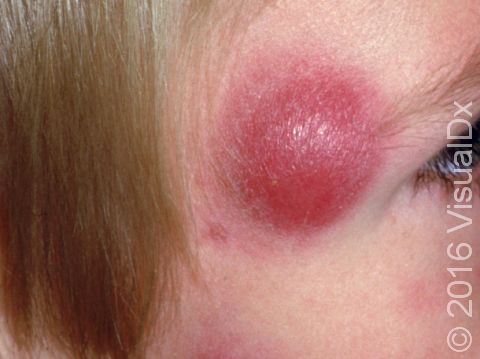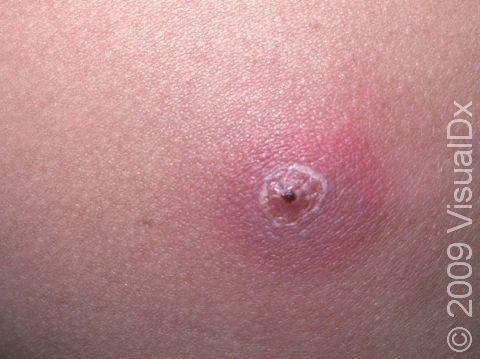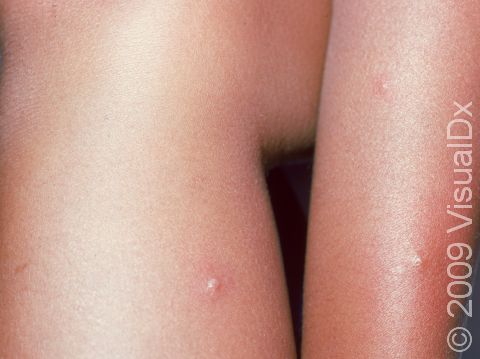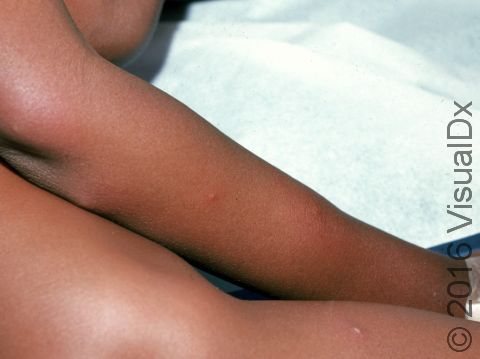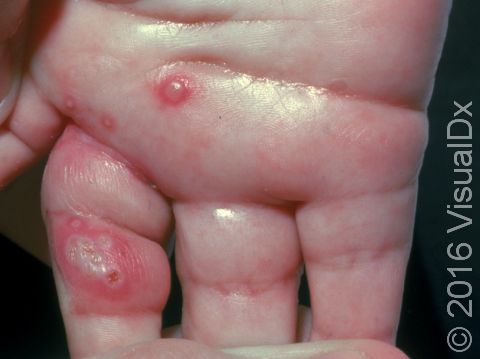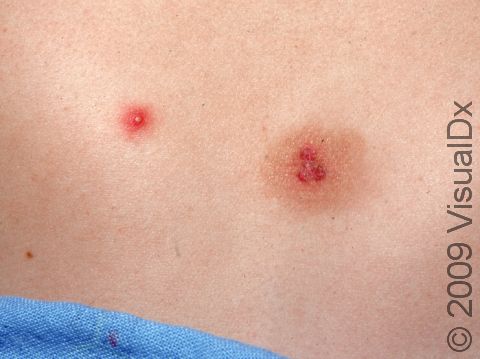Boils (Furunculosis)
Boils (furuncles) are painful pus-filled lumps on the skin resulting from the deep infection of a hair follicle. The infection is usually caused by a type of bacteria called Staphylococcus aureus (commonly known as staph). Many people are “carriers” of the staph germ, meaning that it normally lives on their skin or in their nose without doing them any harm. Tiny breaks in the surface of the skin, such as those caused by friction or scratching, however, can help the germ gain entry into and infect the hair follicle, resulting in a boil.
Boils may resolve with simple self-care measures, but the infected fluid (pus) needs to drain in order for them to heal completely. Many boils drain of their own accord, or they can be lanced by a health care professional. Antibiotics may also be prescribed. Untreated boils can enlarge or grow together to form a giant multi-headed boil (called a carbuncle). Rarely, the infection in the skin can get into the bloodstream, leading to serious illness.
Who's At Risk?
Boils are most common in teenagers and young adults.
People that are particularly prone to developing boils include:
- Athletes participating in contact sports or using shared equipment
- Individuals with a weakened immune system, such as persons with HIV, diabetics, and those taking certain medications, such as the types of medications used to prevent rejection of a transplanted organ or to treat cancer (chemotherapy)
- Individuals with another skin condition that may lead to scratching or otherwise injuring the skin (eczema, scabies)
- Staph carriers
- People who are obese
- Individuals with poor nutrition
- People living in close quarters with others (such as in military barracks, prisons, homeless shelters)
Signs & Symptoms
A red-to-purple, tender lump on an area of the skin that also has hair. The most common areas for boils to occur are places where there is friction and/or places that tend to be sweaty, such as the buttocks, armpits, groin, neck, shoulders, and face. The skin surrounding the lump may look swollen and red. The center of the lump eventually becomes filled with yellow or white pus that you will be able to see (called “coming to a head”). The pus is a mixture of bacteria and infection-fighting white blood cells.
Self-Care Guidelines
Applying warm compresses to the affected area on the child for 20 minutes at least 3–4 times a day may ease the discomfort and help encourage the boil to drain. If the boil starts to drain, wash the area with antibacterial soap and apply some triple antibiotic ointment and a loose bandage. Repeat this process of cleansing and bandaging the area 2–3 times a day until the skin is healed.
Boils can be very contagious. Do not allow the child to share clothing, towels, bedding, or sporting equipment with others while he or she has a boil. Wash your child’s hands frequently with antibacterial hand soap to avoid spreading the infection to others.
Have the child use an antibacterial soap on boil-prone areas when showering, and dry the skin thoroughly after bathing. The child should avoid tight-fitting clothing and activities that cause a great deal of sweating.
Do not pop the boil yourself or allow the child to pop the boil with a pin or needle. Doing so may make the infection worse.
Treatments
The pus inside a boil needs to be drained thoroughly before the body can completely clear the infection. If the boil does not drain itself, your child’s doctor may wish to perform a simple procedure. In this procedure, a sterile needle or small blade is used to “nick” the skin over the top of the boil, and the pus is allowed to drain out. The area will then be cleaned and bandaged, and you will be sent home with instructions to wash, apply antibacterial ointment, and re-bandage the area on the child several times daily as discussed above. The child may also be prescribed a course of antibiotics to be taken by mouth.
The child’s physician may choose to collect a swab of the pus for laboratory analysis and swabs from other areas of the body (nose, armpits, and/or anus and genital area) to determine if he or she is a carrier of staph. If the child is a carrier, the doctor may prescribe a topical medication applied to the inside of the nose and/or oral antibiotics for several days. These measures can help to prevent a recurrence of the boil(s) and to decrease the possibility that the child may unknowingly spread the germ to others. If your child’s doctor prescribes antibiotics, be sure the child takes the full course of treatment.
Visit Urgency
See the child’s doctor if:
- There are multiple boils or if the boil(s) increase in size or number.
- The child has a fever or chills, severe pain, or otherwise feels unwell.
- The boil fails to drain.
- The area of redness surrounding the boil begins spreading.
- The child has diabetes, a heart murmur, a problem with his/her immune system, or is taking immune-suppressing medications when the boil develops.
- The child has had repeated outbreaks of boils.
If your child is currently being treated for a skin infection that has not improved after 2–3 days of antibiotics, return to the child’s doctor.
Community-associated methicillin-resistant Staphylococcus aureus (CA-MRSA) is a strain of “staph” bacteria resistant to antibiotics in the penicillin family, which have been the cornerstone of antibiotic therapy for staph and skin infections for decades. CA-MRSA previously infected only small segments of the population, such as health care workers and persons using injection drugs. However, CA-MRSA is now a common cause of skin infections in the general population. While CA-MRSA bacteria are resistant to penicillin and penicillin-related antibiotics, most staph infections with CA-MRSA can be easily treated by health care practitioners using local skin care and commonly available non-penicillin-family antibiotics. Rarely, CA-MRSA can cause serious skin and soft tissue (deeper) infections. Staph infections typically start as small red bumps or pus-filled bumps, which can rapidly turn into deep, painful sores. If you see a red bump or pus-filled bump on your child’s skin that is worsening or showing any signs of infection (ie, the area becomes increasingly painful, red, or swollen), see the child’s doctor right away. Many people believe incorrectly that these bumps are the result of a spider bite when they arrive at the doctor’s office. Your doctor may need to test (culture) infected skin for MRSA before starting antibiotics. If your child has a skin problem that resembles a CA-MRSA infection or a culture that is positive for MRSA, the doctor may need to provide local skin care and prescribe oral antibiotics. To prevent spread of infection to others, infected wounds, hands, and other exposed body areas should be kept clean and wounds should be covered during therapy.
References
Bolognia, Jean L., ed. Dermatology, p. 1126. New York: Mosby, 2003.
Wolff, Klaus, ed. Fitzpatrick’s Dermatology in General Medicine. 7th ed, pp. 1700-1701. New York: McGraw-Hill, 2008.
Last modified on October 10th, 2022 at 8:32 pm

Not sure what to look for?
Try our new Rash and Skin Condition Finder
